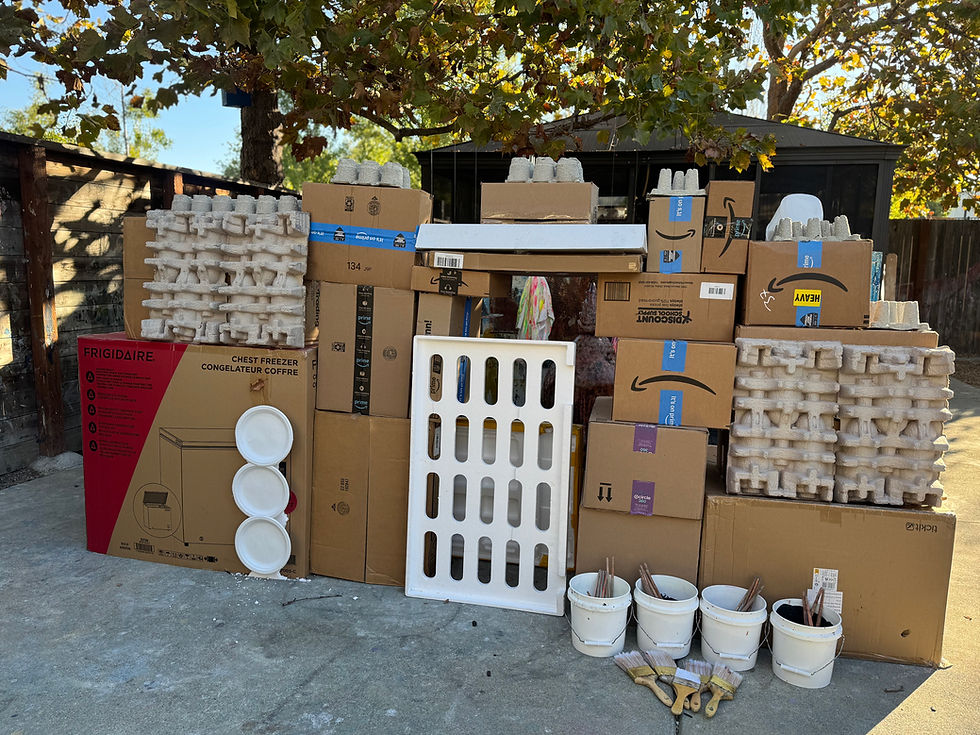Wave Mixed Media Textured Painting
- Yasmeen Kamrani Sallam

- Jul 9
- 2 min read
In the wordless book Wave by acclaimed artist Suzy Lee, a little girl's day at the beach is depicted in the stunning illustrations that create a vibrant movement of the ocean water crashing into waves on the beach. Wordless books, while seemingly counterintuitive, are incredibly beneficial for developing literacy skills. A great picture book is indeed priceless, as it empowers visual thinkers by building their confidence & reducing pressure, allowing them to focus on context clues. These books encourage children to actively engage their imagination, using the illustrations to guide their own unique storylines. This process is excellent for developing comprehension skills, as well as understanding story structure & sequencing. Wordless books foster an open dialogue between adults & children. Whether you prompt questions or the child does, it naturally leads to exploring cause and effect, which can also aid in the acquisition of new vocabulary.


To extend the literacy experience after reading the story, we invited the children to create their own waves through mixed media art. First we provided puffy paint that is made out of shaving cream, glue, & paint (Colorations Bio Color, Tempera, Liquid Watercolors) Then the children were invited to paint waves, after that we invited them to add different textures: sand, paper (tissue, cellophane, metallic, construction), pipe cleaners, & pom poms.


Here are some insights on how powerful mixed media art can be for mental and emotional development in young children. Studies have shown that creative activities like this significantly reduce stress, improve focus, & boost self-esteem. Here are some of the key benefits: Encourages emotional expression: Through layering different textures, colors, & materials, children can visually represent their inner world, helping them to process complex emotions in a healthy way. Builds confidence & resilience:Mixed media art teaches kids that there's no single "right" way to create. When a project doesn't go as planned, they learn to adapt, problem-solve, & try again—an essential skill for both school & life. Reduces stress & anxiety: Art has been proven to lower cortisol levels & promote relaxation. The tactile experience of gluing, & painting engages the senses, helping kids focus on the present moment. Fosters problem-solving & critical thinking: Mixed media art encourages kids to think outside the box. When given a variety of materials, they learn how to combine them in innovative ways, enhancing their problem-solving & critical-thinking skills. This creative flexibility translates into other areas of life, such as academics & social interactions. Improves focus & fine motor skills: Layering textures & working with different materials refines fine motor skills and hand-eye coordination. Focusing on a creative project also teaches patience & perseverance—skills that are valuable in school & everyday tasks. Provides a safe, supportive space for growth:Mixed media techniques create an inclusive atmosphere where children can express themselves freely. This sense of community fosters emotional support, helping children feel connected & valued. Offers hands-on learning that keeps kids engaged: Mixed media art requires kids to use their hands, engage their senses, & stay present in the moment.

Here is another way to extend the literacy experience through the arts about this book.

Here is another way to extend the literacy experience about the same book.



























































Comments